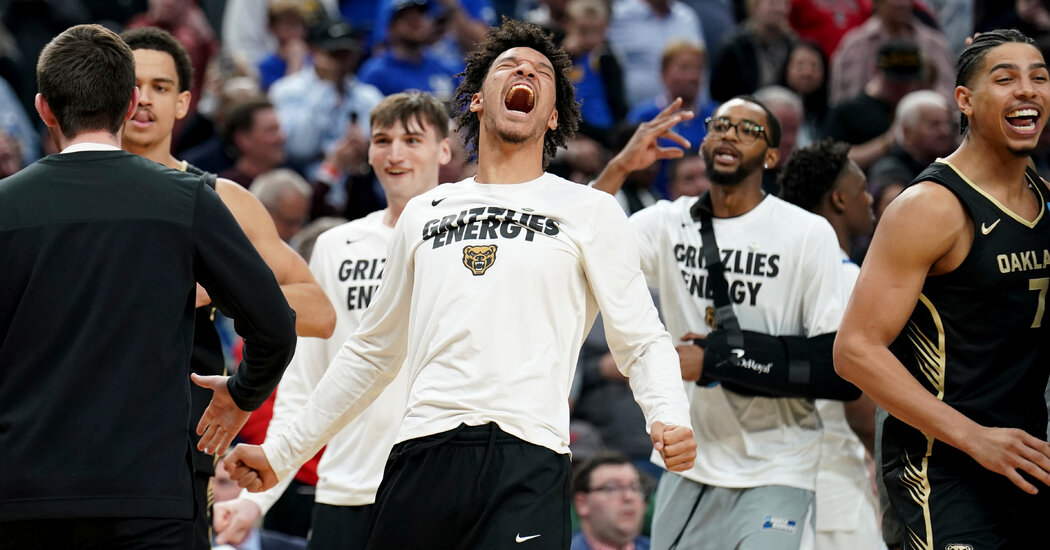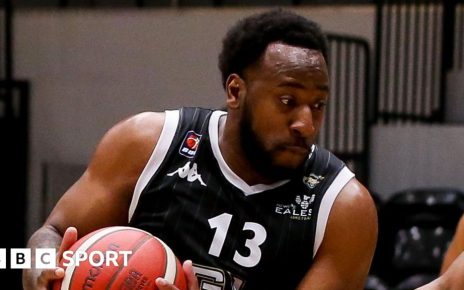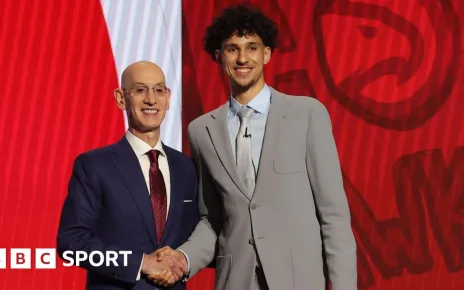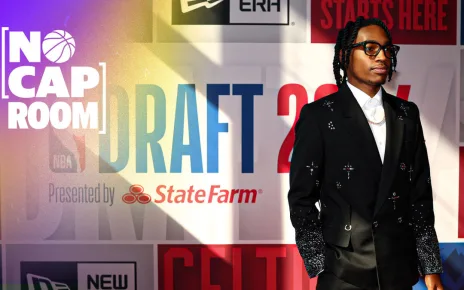When Oakland University’s 14th-seeded men’s basketball team defeated No. 3 Kentucky on Thursday night, delivering the first shocking upset of this year’s N.C.A.A. tournament, it cast a spotlight on the relatively anonymous university in Rochester, Mich.
And if history is any indication, the next few days and weeks — and perhaps longer — promise to be a lucrative time for the school.
Upset victories by double-digit seeds are not just a big deal for busted tournament brackets. They also raise the profile of the schools that pull off the shockers. Big wins routinely lead to spikes in applications, enrollment and, as the university community rallies around its team, alumni contributions. Media coverage leads to attention that is otherwise hard to come by, and the name recognition can be long lasting.
“It was a bit surrealistic,” said Eugene Cornacchia, the president of St. Peter’s, whose men’s basketball team also upset Kentucky in 2022. “It was exciting to win, but I didn’t necessarily understand the onslaught of the attention that would ramp up so quickly.”
After the victory, Cornacchia said, his phone was ablaze with text messages from friends, alumni and members of the media. His school, a Jesuit university in Jersey City, N.J., with an enrollment of around 3,000 students and an endowment of less than $40 million, had previously been to three tournaments and won zero games.
The team went on to win its next two games, before falling in a regional final to North Carolina.
The tournament run was good for business. In the eight months before the win by St. Peter’s over Kentucky, the university sold roughly $58,000 worth of merchandise, Cornacchia said. After the upset and through the end of that month, it sold more than $300,000 worth of merchandise and ran out of its supply in a matter of days. Yearly commitments from donors rose from $450,000 to more than $2 million.
In 2006, after George Mason’s improbable run to the Final Four, a professor at the university estimated that the school had received more than $600 million worth of free publicity and a 22 percent increase in applications. For public schools that make runs in the tournament, a subsequent jump in students coming from out of state boosts receipts from tuition.
In the initial hours after its win over Kentucky, St. Peter’s was caught flat-footed. Unlike their counterparts at larger schools who are usually detached from menial tasks, officials at the university found themselves personally handling ticket requests for the team’s next game, as well as season ticket orders for the next year.
Brad Hurlbut, the athletic director at Fairleigh Dickinson, whose men’s basketball team defeated top-seeded Purdue last year, described “lugging boxes and vacuuming trash” at his office in Hackensack, N.J., a far cry from the duties of his peers at larger schools.
University staff members, inside and outside athletic departments, are less plentiful than at the schools that typically dominate the N.C.A.A. tournament. So when a team scores its biggest win in program history, a skeleton crew of employees is left to handle media requests, craft new marketing campaigns and otherwise seize the moment.
David Vazquez was the director of budgets at Florida Gulf Coast when it defeated Georgetown in the 2013 tournament. The school followed up that surprise win with another in the next round, becoming the first No. 15 seed to make it to the round of 16. All the while, Vazquez said, employees in public relations and marketing were “burning the midnight oil because everyone wanted to learn about us.”
By the time the team arrived back to campus after its first two games, the school was already changed. The university’s “dunk city” moniker, a reference to the team’s athletic style of play, caught on. The next year, its applications spiked, particularly from out of state.
With an enrollment of about 16,000 students, Oakland is considerably larger than some other March darlings. But compared with Kentucky, it’s in a different stratosphere athletically. Oakland’s athletic department spent $15 million in 2022, about one-tenth of Kentucky’s expenses last year.
Cornacchia, the president of St. Peter’s, acknowledged that the school was limited by its size and reach, and that recreating the magic of 2022 was a tall order for future teams. (St. Peter’s returned to the tournament this year and lost Thursday night in a rout to Tennessee.)
For Hurlbut, the athletic director at Fairleigh Dickinson, the long hours after the win were worth the payoff: It meant a new locker room for the team, a naming rights deal for its arena and an agreement to have some of its games broadcast on the YES Network.
“This is just so much more satisfying and gratifying to me to be at a small school, and provide your university with all those great things that winning can do,” Hurlbut said. “You can sleep when it’s over.”




